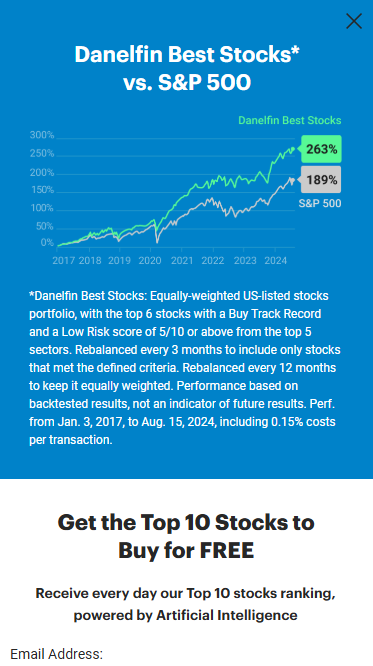20 Handy Tips On Choosing AI Stock Investing Platform Sites
Wiki Article
Top 10 Tips On How To Evaluate The Accuracy And Performance Of Ai Platforms For Predicting And Analysing Stocks
To ensure that the tool you choose will provide accurate insights and forecasts, it is essential to evaluate the accuracy and efficiency of the tool. Here are 10 of the best tips to help you assess these platforms.
1. Backtesting Results
What to Watch Out For Make sure the software permits backtesting. This will let you evaluate the accuracy of your predictions using historical data.
Why It Matters : Backtesting is a method to verify an AI model through comparing the predictions to actual results.
Tip: Look for platforms that allow you to alter the parameters used for backtesting (e.g., time frames, asset classes).
2. Real-time Performance Tracking
What to Look Out For: How the platform performs under real-time conditions.
Why it is Important Real-time performance of a platform is a more reliable indicator than the backtesting of historical data.
Tip : You can sign up for an account demo, or an evaluation version of the program to monitor real-time movements and then compare it with your predictions.
3. Prediction Error Metrics
What to Watch Out For: Measure prediction accuracy by evaluating metrics like the Mean Absolute Error(MAE) and the Root-Mean Squared Error(RMSE) or Rsquared.
What is the significance of these metrics offer a quantitative measure to assess how close predictions are to actual outcomes.
Tip: Platforms that publicly reveal their metrics tend to be more transparent and trustworthy.
4. The rate of winning and the success ratio
What to look for: Examine the platform's win rate, which is the percentage of predictions that are accurate. Also check its success ratio (the profit of trading based on predicted outcomes).
Why is it important What is important: A high win percentage and success rate indicates higher precision in forecasting as well as potential profitability.
TIP: Beware of sites that advertise unrealistic winning rates (e.g. 90%) %+), since the system cannot be perfect.
5. Benchmarking Market Indices Against Benchmarks
What to look for Check the platform's predictions and performance to major market indices (e.g., S&P 500, NASDAQ).
What is important This will help determine if the platform is outperforming or is underperforming the market in general.
Seek out steady gains over a long duration of time.
6. Consistency in Market Conditions
What to Look For Check how the platform performs under different market conditions (bull markets, bear markets, high volatility).
Why it is important A solid platform can perform well in all markets, not just those that are in good conditions.
Check out the predictions of the platform in volatile markets or during markets that are down.
7. Transparency in Methodology
What to look out for What to look for: Learn AI algorithms and models (e.g. reinforcement learning and neural networks, reinforcement learning, etc.).
What is important Transparency is essential because it helps you determine the scientific accuracy and reliability of the system.
Avoid websites that employ "black-box" models which do not provide a rationale for how predictions are made.
8. User Reviews and Independent Testing
What to watch out for: Read user reviews, and also independent testing and third-party assessments.
Why it matters: Independent reviews and tests offer objective insights on the platform's accuracy and performance.
Tips: To learn what users think, check forums such as Reddit copyright, and financial blogs.
9. Risk-Adjusted Returns
What to look out for: Evaluate the performance of your platform using risks-adjusted indicators such as the Sharpe Ratio or Sortino Ratio.
What is the significance of this measure measures the risk that is taken to realize returns. It gives the most complete picture of the performance.
Tip: A high Sharpe Ratio (e.g. higher than 1) suggests higher risk-adjusted return.
10. Long-term track records
What to look for What to look for: Examine the platform's performance over a time period (e.g. three to five years).
Why it is Important Why it is Important: Long-term results are more reliable than results in the short-term.
Avoid platforms which only show the results of a short-term study or a cherry-picked achievement.
Bonus Tip Test on Demo Account
Utilize a demo account, or a free trial to test the platform's predictions in real-time, without risking any real money. This lets you assess the accuracy and efficiency.
These suggestions will allow you to assess the reliability of AI platform for predicting stocks and analyzing them and select one that is compatible with your objectives in trading and the risk tolerance. It is crucial to keep in mind that there is no perfect platform. The best approach is to mix AI knowledge with your own research. View the most popular from this source about ai trading tools for website tips including ai stock trading bot free, trading ai, chart ai trading assistant, ai trading tools, ai investing platform, using ai to trade stocks, ai for investing, ai stock market, best ai stock, ai trading and more.

Top 10 Tips On Risk Management Of Ai Trading Platforms That Can Predict Or Analyze The Price Of Stocks.
Risk management is a key element of any AI trading platform. It can help protect your investment while minimizing the risk of losses. A platform that has robust risk management tools can help you navigate volatile markets and make informed choices. Here are 10 guidelines on how to assess the capabilities of the platform's risk management tools.
1. Review Stop-Loss and take-profit features
Customizable levels: Ensure the platform allows you to set stop-loss and take-profit levels for each trade or strategy.
Check if you can use trailing stops. They will automatically adjust if the market moves to your advantage.
Check if your platform allows you to place stop-loss orders that guarantee the closing of your trade at the price stipulated, even on unstable markets.
2. Calculate the Size of Position Tools
Fixed amount: Make sure the platform lets you define positions based on a certain amount of money fixed.
Percentage of portfolio Manage your risk by establishing the size of your portfolio proportionally in terms of a percentage.
Risk-reward ratio: Determine whether the platform allows setting risk-reward ratios on individual strategies or trades.
3. Check for Diversification Assistance
Multi-asset Trading to diversify your portfolio of investments, make sure that the platform you choose allows trading across multiple asset classes.
Sector allocation: Ensure that the platform is equipped with tools for monitoring exposure to different sectors.
Geographic diversification. Examine the platform you use allows you to trade in international markets. This could aid in spreading the risk across different geographic areas.
4. Controlling leverage and margins
Margin requirements - Check that the platform clarifies the margin requirements clearly.
Limits on leverage: Find out whether the platform permits users to set leverage limits to limit the risk exposure.
Margin Calls: Verify that the platform is sending timely notifications of margin calls to stop account liquidation.
5. Assessment Risk Analytics and reporting
Risk metrics: Ensure that the platform offers key risk metrics to your portfolio (e.g. Value at Risk (VaR) Sharpe ratio and drawdown).
Scenario analysis: Ensure that the platform is able to create different scenarios for the market in order to evaluate risks.
Performance reports: Verify whether the platform offers detailed performance reports, including risk-adjusted returns.
6. Check for Real-Time Risk Monitoring
Monitoring your portfolio. Make sure your platform can track in real-time the risk of your portfolio.
Notifications and alerts. Find out if the platform provides real-time notifications of risk-related events.
Risk dashboards: Check if the platform offers customizable risk dashboards to provide a comprehensive view of your risk profile.
7. Tests of Backtesting, Stress Evaluation
Stress testing: Check whether the platform allows you to stress-test your portfolios or strategies in extremely difficult market conditions.
Backtesting. Check whether the platform supports backtesting. This is the application of historical data to evaluate risk and performance.
Monte Carlo Simulations: Check whether the application uses Monte Carlo simulations in order to assess and model various possible results.
8. Risk Management Regulations: Assess compliance
Make sure that the platform is in compliance with the requirements for regulatory compliance (e.g. MiFID II regulations in Europe, Reg T regulations in the U.S.).
Best execution: Check if the platform is following the top execution method, which guarantees that trades are carried out at the best price in order to minimize any loss.
Transparency: See if the platform provides clear and transparent risk disclosures.
9. Look for risk parameters that are user-controlled
Customized risk rules: Make sure whether your platform lets you create custom risk management guidelines (e.g. maximum daily loss or maximum position size).
Automated risk controls Check to see if your platform can apply risk management rules on the parameters you've defined.
Manual overrides: Verify that the platform supports manual overrides in emergency situations.
User feedback from reviewers and case studies
User reviews: Examine user feedback and assess the effectiveness of the platform in managing risk.
Case studies: Look for case studies or testimonials which highlight the platform's capabilities in risk management.
Forums for communities: Find out if there is a vibrant community of traders who share tips and strategies for risk management.
Bonus Tips
Free Trial: Get a free trial of the platform's features for risk management in real situations.
Customer Support: Ensure that the platform is able to provide comprehensive support in the event of any risk management-related questions or issues.
Educational resources - Check to see whether the platform offers instructional resources and videos on risk management best practices.
By following these tips you can evaluate the capability of AI software for analyzing and predicting stocks to manage risks. This will ensure you pick a system that is safe for your investment and reduces any losses that could occur. To navigate turbulent markets and attain long-term gains in trading, you need robust risk management software. Follow the best ai copyright signals for more advice including ai stock analysis, ai copyright signals, ai for trading stocks, best stock prediction website, free ai tool for stock market india, best ai stocks to buy now, best stock prediction website, stocks ai, ai tools for trading, stock trading ai and more.
